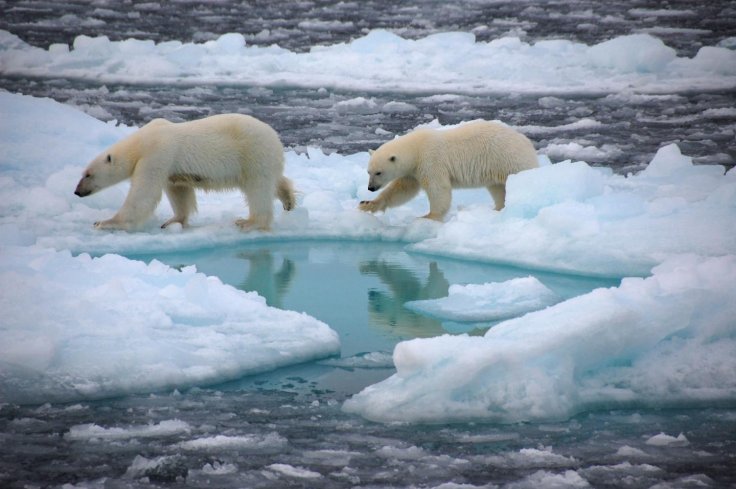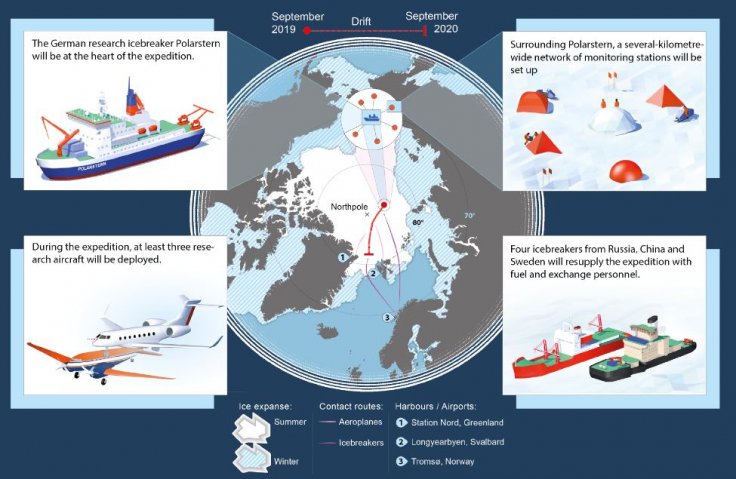Researchers on the world's biggest mission to the North Pole have finally completed the Arctic expedition and the vessel carrying the scientists Polarstern has returned to the port in Bremerhaven, Germany, this week. But there is nothing to be happy about, as the scientists have brought some devastating facts about the dying Arctic ocean.
Almost a year ago, on September 20, 2019, the vessel left Norway for the polar voyage. The hundreds of scientists from 20 countries all around the world participated in this research program— Multidisciplinary drifting Observatory for the Study of Arctic Climate (MOSAiC) expedition.
However, in March this year, at the time when the Coronavirus pandemic spread across the globe, a MOSAiC crew member tested positive for COVID-19—just before joining the mission in the Arctic. This incident caused some unprecedented delays, as the safety of other researchers from the virus became a massive concern.

Our Arctic Is Dying
During the expedition, the researchers captured a very rare glimpse of the effects of human-caused climate change on the Arctic. They noticed that the region is warming at least twice as fast as the rest of the world—no doubt in that the Arctic is considered as "the epicenter of climate change," even though many people still don't believe in that at all.
Markus Rex—the mission leader—who an atmospheric scientist at Alfred Wegener Institute in Bremerhaven, warned that MOSAiC has clearly shown signs of dying Arctic ocean. Matthew Shupe, an atmospheric scientist at the University of Colorado, a co-coordinator of the expedition also said that the ice is declining "very fast." As per Shupe, "we need to understand the Arctic in order to understand how it is playing along with the rest of global change."
The Expeditions
Scientists gathered 150 terabytes of data about the atmosphere, ecosystems, ocean, and more than 1,000 ice samples from the North Pole to understand the effects of climate change. For close observation, they used four locations on the ocean ice in a radius of up to 40 kilometers around the vessel carrying the scientists.
The researchers took water samples from beneath the Arctic ice sheet during the polar night, to carry out studies on bacteria as well as plant plankton and to understand the marine ecosystem under these extreme weather conditions. They also measured over 100 different factors throughout the expedition, and believe that now, when the exploration program is over, all these collected information will act as breakthrough in terms of enhancing the understanding of the changing climate in the Arctic.

The expedition costs around $154 million and it was funded by the German Federal Ministry of Education and Research, as well as by the US National Science Foundation and Department of Energy. One of the biggest endeavors for researchers will be measuring the climate models, along with new "process level" data—which was collected directly from the world's most isolated part.
As per Shupe, "That's really the foundation of why we're there, to collect this data and to turn it into knowledge that we can then use to develop and improve models." He said that these climate models will help the scientists to tell about the future of the earth's environment. These models can be used to predict the weather and "need those models to faithfully represent what is happening in the Arctic," he added
Rex said "We witnessed how the Arctic ocean is dying. We saw this process right outside our windows, or when we walked on the brittle ice." The mission leader also noted that if the warming continues in that region, within a few decades the world will have "an ice-free Arctic in the summer."









